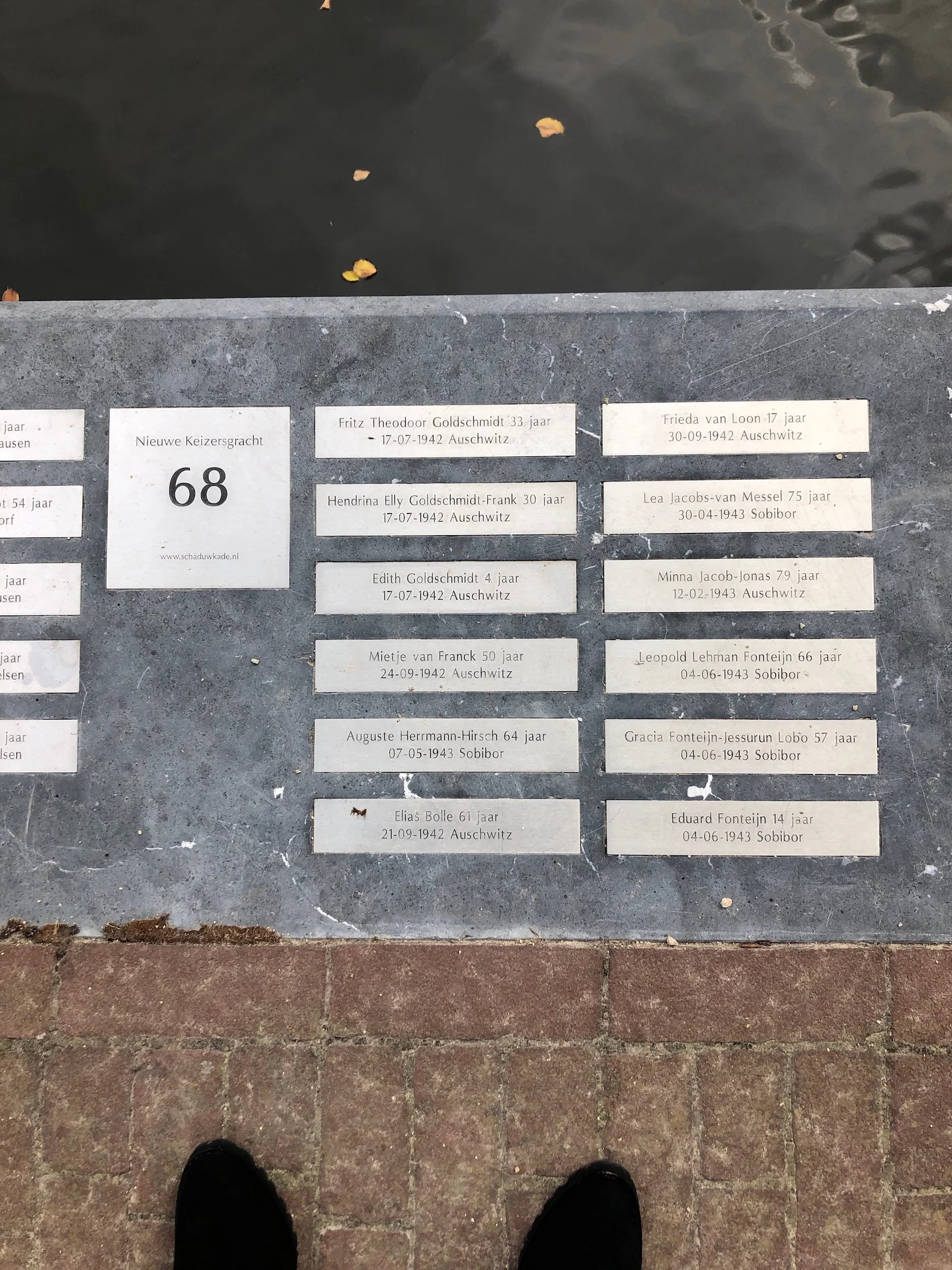De Schaduwkade – The Shadow Quay
The Dutch have been criticized for their role in Jewish (and other ethnic group) deportations. Of the 140,000 Jews living in Holland at the start of WWII, 102,000 of them were deported. This is among the highest percentages in Western Europe. The outcome, as we know, was devastating: Seventy-five percent of the Netherlands Jewish population perished at the hands of the Nazis.
Anne Frank and her family were Dutch. Her hiding place, which is around the corner from our apartment, is among the most visited places in Amsterdam. More than 5000 Dutch citizens, like Miep Gies, have been recognized as Righteous Gentiles by Yad Vashem, the Holocaust memorial and museum in Israel. Only Poland has more recipients.
Grappling with this piece of history is complicated. And, while many monuments and memorials have been proposed to remember Dutch Jews killed in the Holocaust, no single plan has been enacted.
So, I was surprised when I happened to pass by De Schaduwkade, the Shadow Quay, late last week. On a short stretch of the Nieuwe Keizersgracht canal, current residents have created a memorial to the 200 Jewish residents who were deported from their homes on that block. On the quay opposite their former home you can find the address number along with the name, age, and date and place of death of each person who resided there.
It is extremely moving and extremely powerful. I could only walk about halfway down the block before I was overcome by it. Of those who were taken away, only thirteen are known to have survived.
Current residents have created a website where they have compiled additional information and photos about these families as well as the process to create the memorial. You can read more about it here.
Eli and I have been grappling with the best way to talk about the Holocaust with the kids while we are living here. Europe brims with history in a way that is harder to grasp in America. It is all around us, part of the fabric of our lives. As a vivid example, we hear the bells of the Westerkerk all day (and night). These are the same bells that Anne Frank mentions in her diary. To live here and not talk about Anne Frank and not (at least with Norah) visit the museum, would skirt a critical conversation about history – and humanity.
And, particularly, as an American Jew whose relatives were spared only because they had emigrated to the US prior to the start of the war, I want to make sure my kids understand this story; the story that underscores a responsibility to fight for social justice and to always stand up for the rights of others.
But, the subject of the Holocaust, no matter how delicately we approach it, is devastating. And, with all of the change and new experiences that we’re pushing the kids through at the moment, introducing the inevitable fear and anxiety that the horrors of the Holocaust provoke, is even harder. Just last weekend, we visited the Amsterdam History Museum which is housed in a building that was an orphanage in the 17th century. The orphanage exhibit was created especially for kids and quite “soft” in nature, but that didn’t prevent Norah from having nightmares. So, again, this is tricky parenting territory.
Just this year, a new graphic novel interpretation of Anne Frank’s diary was published which Norah and I plan to read together. For now, we bring up history when the context makes sense, and go from there.






